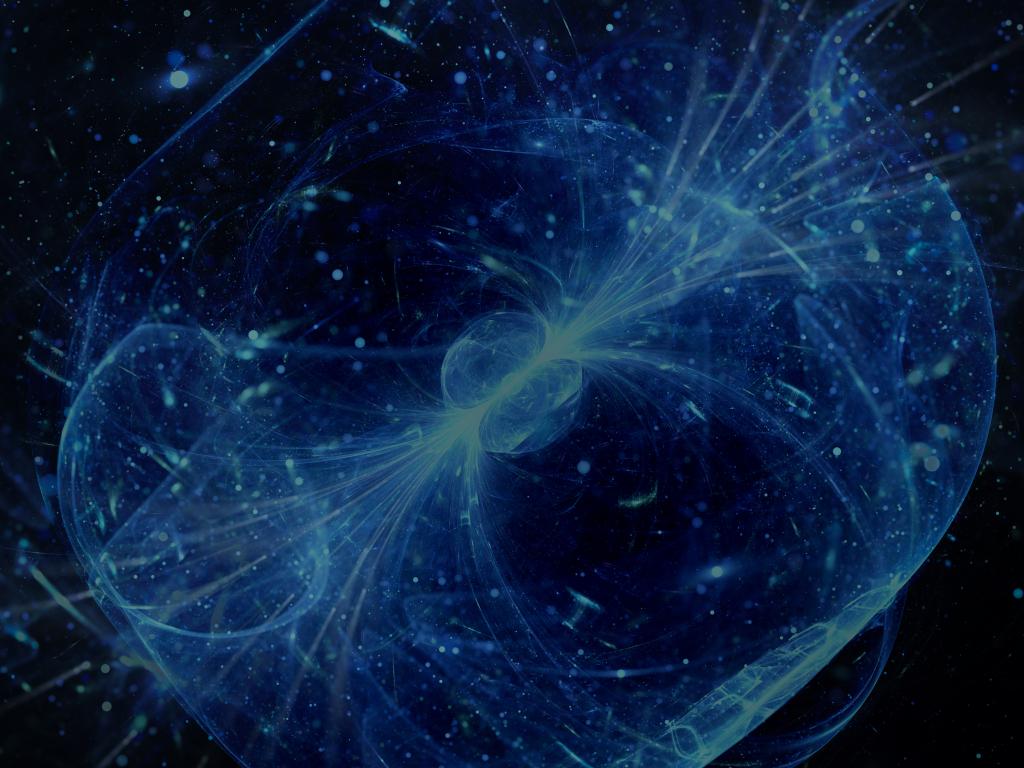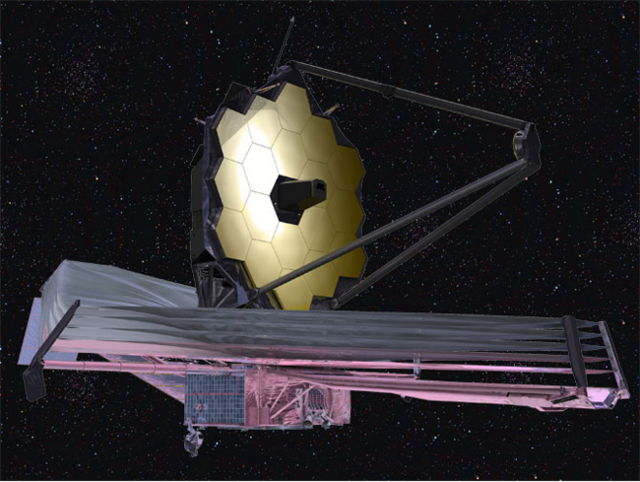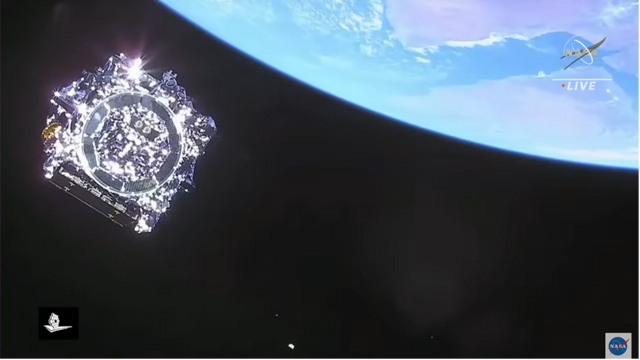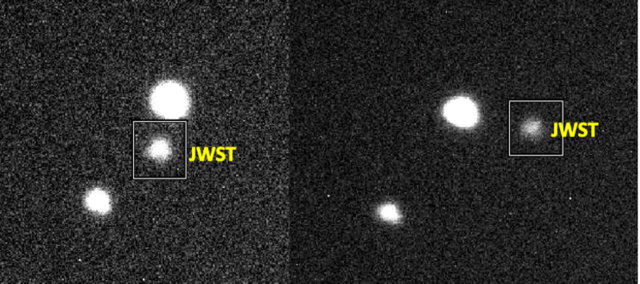Admission CTAs
The James Webb Space Telescope Launch
James Webb Space Telescope: What it means for Mason Astronomers
Early on Christmas day 2021, after more than two decades of painstaking planning, building, and testing, NASA successfully launched the James Webb Space Telescope (JWST). JWST is expected to make observations that will revolutionize our understanding of the early universe, the formation of the earliest stars and galaxies, planets orbiting nearby stars (exoplanets), and search for signatures of life on those planets
JWST has arrived at its observing station nearly one million miles away from the Earth, where it will reside for the next decade and potentially longer. At about four times further away from the Earth than the moon, the spacecraft will be on its own, out of reach of possible refueling and repair missions.
The JWST, named after James E. Webb, a former NASA administrator during the Apollo program (1961-1968), is the largest and most sensitive space telescope in history. Its planning and building were an enormous engineering and technical challenge on many levels, requiring the development of entire new approaches to space astronomy, such as developing a segmented primary mirror comprised of 18 hexagonal smaller mirrors, a thermal sunshield to keep the telescope and instruments cold, and more.
An astronomical and international effort
Over 15,000 people contributed to making JWST a reality, truly an astronomical community effort. From developing the early concepts and feasibility studies, to working with Congress to secure funding, numerous people have had a hand in this mission. As an international effort, this consortium with United States, European, and Canadian partners, represents an investment of over 10 billion US dollars.
The science goals of JWST are prioritized around understanding the formation of the first stars and galaxies (as well as the role of the mysterious dark matter) and understanding the formation and evolution of planets around other stars, although JWST is also expected to revolutionize many other aspects of astronomy as well.
JWST Observations for Mason Astronomers and Astrobiologists
Astronomers and students at Mason are waiting anxiously for the JWST check-out and commissioning activities to complete. Department of Physics and Astronomy Professor Shobita Satyapal and her students work on understanding observations of galaxies that have massive black holes in their centers. She has already proposed JWST observations that her group will carry out once the telescope is put at the disposal of astronomers for science observations, expected to commence six months after launch.
Associate Professor and Mason Observatory Director, Peter Plavchan and his students have studied exoplanets with the Kepler Space Telescope and the Transiting Exoplanet Survey Satellite (TESS) Telescope. His students also use the Mason Observatory to confirm tentative exoplanet detections from TESS and Kepler. Over winter break, Mason College of Science undergraduate student Owen Alfaro and Plavchan steered the Mason Observatory to try to catch the JWST telescope drifting in the sky out amongst the stars. The Observatory is computer controlled and operates remotely, so while Alfaro was at home with his family he was able to show them the view from the telescope. “To our surprise, we found JWST.”
Alfaro commented on sharing his excitement about JWST with his family over the holidays. “JWST has been in the public eye, and so all throughout the week leading up to the launch, they were asking me a bunch of questions. It was really cool to see them so excited about something I was also excited about. And being able to show them such a unique view of the JWST and them being excited about it was incredible.” Alfaro said.
A few weeks later Mason astronomers looked again for JWST, after its sun shield successfully deployed. Several layers of sheets of thin Kapton successfully unfurled to the size of a tennis court to form the sun shield. They are designed to block the telescope from the heat of the Sun, allowing the telescope to be very cold and sensitive to detect faint traces of heat (infrared radiation) from the Universe. This also made the sun shield side of the spacecraft easier to see in the sky, reflecting Sunlight back to Earth. They found JWST again, and this time it sparkled like a diamond in the sky as it rotated slowly around.
According to Professor Michael Summers, who studies the habitability of planets with his students, JWST will also revolutionize the field of astrobiology. "The telescope will give astronomers the ability to detect complex organic chemicals in the atmospheres of exoplanets. The instruments will observe at infrared wavelengths where gases like ozone, methane, and carbon dioxide (all gasses strongly connected to life on Earth) are strongly absorbing. Finding these gases in exoplanet atmospheres would be a strong clue that life might be present.”
For now, Mason astronomers must be patient. There will be several further months of testing and aligning the segmented mirror to make it behave like a single large mirror, and instrument checkout and testing. Then the fun will really begin. In addition to all the expected questions that might be answered with JWST, there will be unexpected discoveries. Every time scientists have used a more powerful telescope to view the heavens, they have found surprises. Mason’s astronomers will keep us apprised of the JWST surprises to come.



